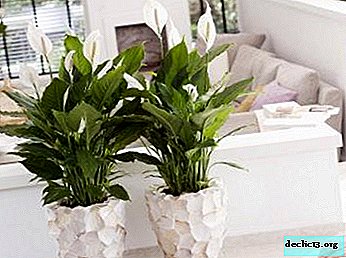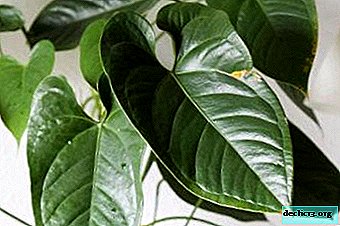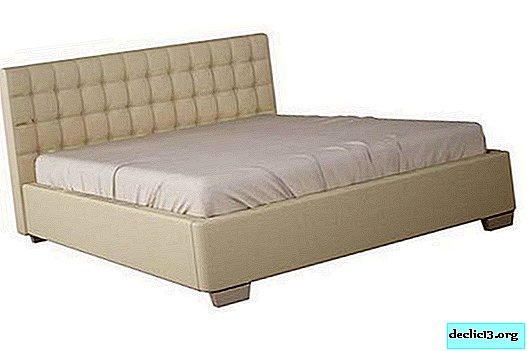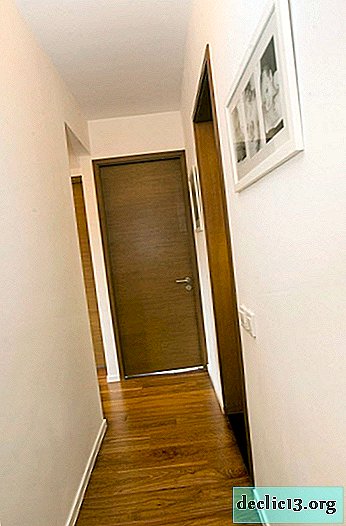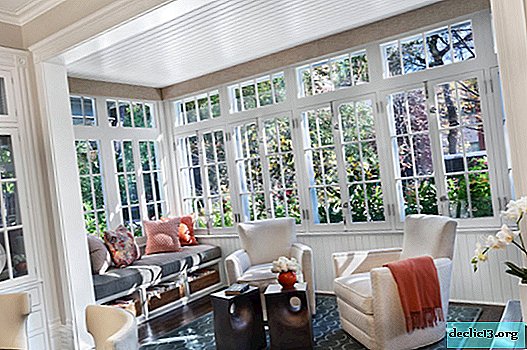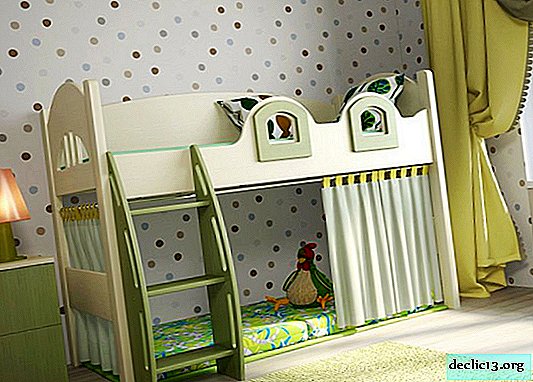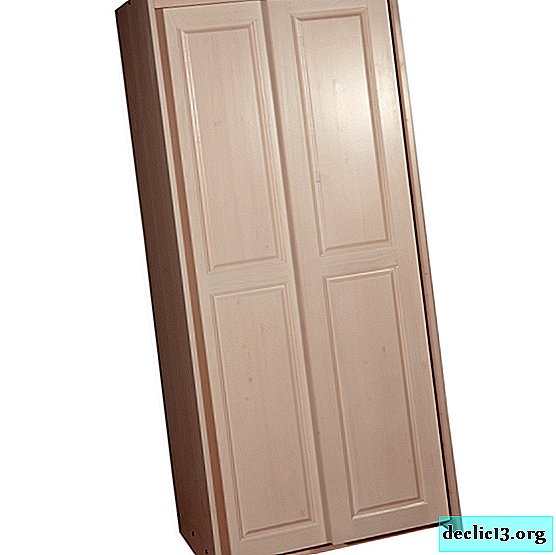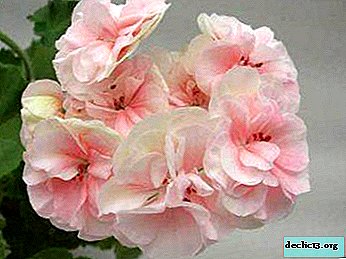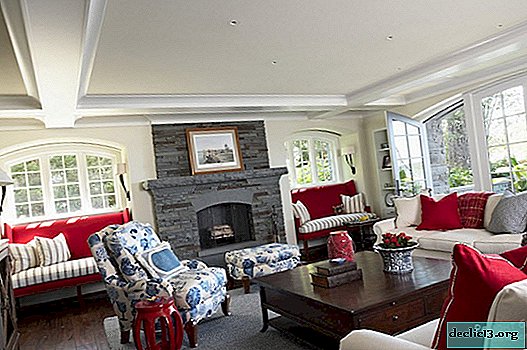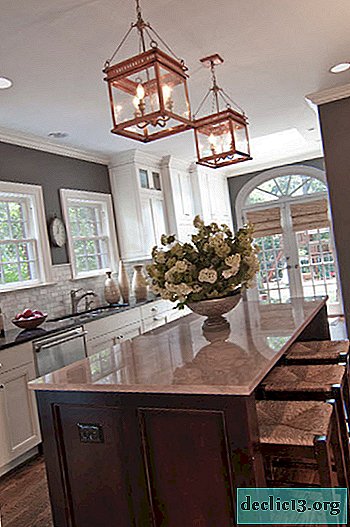All about varieties of coral begonia: features of reproduction and useful tips on proper care

Begonia was discovered by florist botanist Charles Plumieu while exploring the Antilles in the 17th century. He named the unknown plant begonia in honor of the Governor of Haiti, Michel Begon, who gave funds for the expedition. Since then, begonia has rightfully been a royal special floriculture.
Coral begonia, originally from Brazil, is not too demanding to care for, so it can decorate any home.
This article provides information on coral begonia: features of its reproduction and useful tips on proper care.
Botanical Description
In nature, this shrub reaches up to two meters in height. At home, this beauty can grow up to a meter in height. On straight, bamboo-like stems, there are elongated large leaves of a soft matte sheen, hanging like wings. Because of this feature, coral begonia received a different name - Angel Wings.
The leaves have serrated edges and are covered with silver spots, the underside is often a reddish hue. Begonia flowers come in various shades: pink, lilac, coral, purple.
This type of begonia attracts florists by its large bush, growth rate and almost year-round flowering.Varieties
There are more than a thousand species of begonias, but there is still no generally accepted classification of plants. According to one of the options, one can distinguish the following conventional directions:
- Decorative leafy begoniasthat do not have a common elevated stem. Leaves grow from a branched root.
- Tuber begoniascharacterized by tuberous rhizome, fleshy high stems and simple flowers.
- Beautiful flowering begonias - plants with beautiful simple and double flowers of various colors.
- Shrub begonias, representing bushes with numerous side shoots. Coral begonia belongs to this species.
Photo
Here you will see a photo of this beautiful plant - coral begonia:



Where and how to plant her?
When planting a coral begonia, you must definitely choose a pot with holes at the bottomso that excess water can leave unhindered. It is desirable that the width of the top exceeds the width of the bottom. A clay pot is a suitable pot: it does not contain chemical impurities and slowly heats up. At the bottom of the pot should be laid drainage 2 cm thick. For this, you can use broken brick, pebbles, expanded clay, gravel, polystyrene.
Lighting and location
Begonia does not tolerate direct sunlight. Burns on leaves obtained in such bright light will certainly affect not only the appearance of the plant, but also its development.
The plant needs diffused light. Therefore, it is optimal to place begonia pots on a western, eastern or northern window. On the south window, the plant can be placed in the winter.Soil requirements
The soil for coral begonia should easily pass both air and water. You can use mixtures of the following compositions:
- Two parts of ordinary land, part of compost, part of dry peat, part of coarse sand.
- Two parts of sheet soil, two parts of humus, part of coarse sand.
You can purchase a specially prepared mixture for coral begonia. A mixture designed for violets is also suitable.
How to care for this indoor plant?
Coral begonia is easier to tolerate the lack of water than its excess, so you need to water the plant, making sure that the topsoil is completely dry. In summer, watering should be more plentiful. The fleshy leaves of begonia at high temperatures quickly lose moisture, and this can lead to the death of the beauty.
The temperature regime for begonia is optimal in the range from 17 to 25 degrees. It is advisable not to place the plant near the window leaves or in places of through ventilation, as this can adversely affect the development of begonia.
 When watering 2 times a month in water, it is advisable to add a potassium fertilizer solution. To obtain the necessary care, the soil in the pot must be updated annually. In the spring, begonia can be fed with phosphorus fertilizers, but not more than twice a month.
When watering 2 times a month in water, it is advisable to add a potassium fertilizer solution. To obtain the necessary care, the soil in the pot must be updated annually. In the spring, begonia can be fed with phosphorus fertilizers, but not more than twice a month.
If the plant is young, then at the beginning of summer it is advisable to transplant it into a large container. A transplant is best done the day after watering. However, when choosing a pot, the following should be considered: a large amount of unused land leads to putrefactive processes. Adult begonias do not need frequent transplants; you can replace this process by replacing the topsoil.
IMPORTANT. Do not transplant the plant during the flowering period.She also needs pruning. If you do not form a bush when caring for the plant, then the extended stems will negatively affect the appearance of the begonia. Therefore, it is worth pruning the shoots after the third internode in order to stimulate the growth of side branches. Cut cuttings can be used to propagate begonias..
After flowering, dry branches and brushes need to be cut, otherwise the begonia will begin to lose nutrients.
Common Diseases and Pests
Like all begonias, a coral beauty can be affected by diseases or pests.
- High humidity or insufficient air circulation can lead to the appearance of ugly brown, or even black spots on the leaves of the plant. In this case, the air-temperature regime should be normalized and fungicidal agents should be used, having previously removed all affected areas.
- Darkening, drying sheets covered with white flour coating are signs of powdery mildew. You can cure begonia using any fungicidal solution, or by preparing yourself a mixture of two grams of copper sulfate and twenty grams of tar soap per liter of water.
- If the lower sides of the leaves are covered with glassy water-like spots, gradually darkening to brown, this indicates the presence of bacterial spotting. Unfortunately, this disease cannot be cured, and the plant will have to be destroyed.
- Poorly blooming begonia with deformed leaves affected by a sugar coating with a fungus is evidence of affection with a false scab. This is a small transparent insect that feeds on the sap of the plant. Any pesticide intended for indoor plants will help get rid of the pest.
- If small insects of an oval shape are noticeable on the underside of a yellowed leaf, then the aphid, a carrier of viral diseases, has affected begonia. A solution of ordinary household soap (20 grams per liter of water) or a purchased insecticide will help.
- One of the most common pests is the spider mite. Almost invisible due to its microscopic size, this pest is capable of causing critical damage to begonia. During nutrition, he punctures the sheets, which leads to a deterioration in photosynthesis and a violation of the normal development of the plant. If begonia is not cured in time, then it will die. To get rid of the parasite, acaricides and insectoacaricides should be used.
Propagation Features
 Coral begonia easily propagates at home. Several breeding options are possible.:
Coral begonia easily propagates at home. Several breeding options are possible.:
- A leaf stalk about ten centimeters long should be placed in water (or wet sand). When the appeared roots reach one and a half centimeters in length, the stalk must be transplanted into the ground. You can accelerate growth by covering the container with the handle with a glass jar (this imitates greenhouse conditions).
To avoid the development of a fungal disease in a young plant, it is necessary to powder the place of contact of the handle with the soil with wood ash.
- To propagate the plant with leaves, it is necessary to make incisions on the back of the sheet, lay the sheet on a damp substrate and cover with a film. Periodically, it is necessary to trim the parts with the formed roots, leaving some for further growth.
- When transplanting, you can divide the rhizome. This is not only a method of reproduction, but also a procedure for rejuvenating an adult begonia.
Why doesn’t bloom?
In some cases, coral begonia does not bloom. It is necessary to know the possible reasons in order to prevent or correct this situation in time. Here are common reasons a plant gives foliage but does not bloom.
- Young age of begonia. Too young a plant may simply not develop until the time of natural flowering.
- Lack of lighting. Begonia will not bloom with a lack of light. To remedy the situation, it is enough to transfer the pot to a more lighted room.
- Dry air. If begonia has stopped flowering, and the leaves are drying along the edges, the reason is the air is too dry for the plant. It is necessary to increase the humidity in the room. The outlet may be a container of water next to the begonia.
- Cold air. Too cold air leads begonia to a stressful state, in which it will be impossible to wait for flowering from it. It is necessary to adjust the air-thermal regime to build a comfortable environment for the plant.
- Lack of rest periods. After each flowering begonia, it takes time to rest. Sometimes this schedule goes astray and the plant does not have enough vitality for repeated flowering. Correction of rest periods in this case is necessary.
To do this, in the summer, a pot of begonias is placed in a cool darkened place, watering is reduced and daylight hours are artificially reduced, covering begonia after seven light hours. After a couple of months of rest, begonia can be gradually withdrawn from this state, increasing the duration of daylight hours, watering and air temperature.
- Lack of vitamins. Sometimes begonia does not give flowers due to a lack of vitamins. In this case, it is worth changing the soil to a special soil for begonias.
- Diseases and pests also lead to a lack of flowering. If a disease or harmful insect is found, a course of appropriate treatment should be taken immediately.
Conclusion
If you do not observe the most difficult conditions for caring for coral begonia, then the Brazilian beauty in gratitude will delight with magnificent flowers, creating the mood and atmosphere of the holiday in the house.





